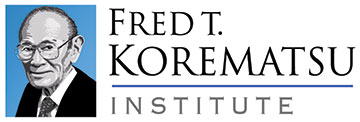Women's History Month statement on Mitsuye Endo
Women’s History Month is a celebration of women’s often-overlooked contributions to our history, culture, and society. As we “Celebrate Women Who Tell Our Stories” this year, we remember Mitsuye Endo, who stood up for what is right by giving voice to thousands of innocent Japanese Americans unjustly incarcerated during WWII.
Shortly after the U.S. entered the war, following the bombing of Pearl Harbor, Japanese American civilians living on the West Coast were ordered to leave their homes and sent to hastily-constructed “camps” in remote areas of the country, where most spent the duration of the war. While two-thirds of the more than 125,000 Japanese Americans were U.S. citizens by birth, they were denied their basic civil liberties of due process and protection against unreasonable search and seizure. In effect, the government treated them as criminals, enemies of the state, with no just cause.
At the time, Mitsuye Endo was a twenty-two-year-old employee of the California Department of Employment. Born and raised in California to Japanese immigrant parents, she didn’t speak Japanese and had never visited Japan. Yet, she, along with all other Japanese American state employees was fired from her job and forced to leave her home in Sacramento.
[Add something about how she and other state employees first challenged their firing.]
The Japanese American Citizens League hired lawyer John Purcell to challenge the incarceration through a habeas corpus petition and Purcell paired with Mitsuye Endo at Tule Lake. Purcell found Endo to be an ideal candidate because had a brother in the army and had never been to Japan. Reluctant at first, she agreed when she realized the case was about more than her.
“I agreed to do it at that moment, because they said it’s for the good of everybody, and so I said, well if that’s it, I’ll go ahead and do it.”
Following the habeas corpus petition on July 12, 1942, the case eventually ended with the U.S. Supreme Court ruling in Endo’s favor in December 1944. The government offered her an early release to scuttle the lawsuit, but she refused. Due to a leak from government officials of the upcoming favorable ruling, the army opened up the West Coast to “loyal” Japanese Americans just prior to the Supreme Court decision. Mitsuye remained incarcerated the entire time, including time in Topaz, the same camp where Fred Korematsu’s family was..
The cases of Mitsuye Endo and Fred Korematsu are often considered together, but while Endo’s case determined that a citizen could not be imprisoned if the government was unable to prove their “disloyalty,” Korematsu gave the government a loophole to punish those citizens criminally for refusing to be illegally imprisoned. His conviction in 1942 was affirmed by the Supreme Court in 1944. In 1983, however, Korematsu succeeded in winning a court order that vacated the original conviction, and in the process, acknowledged the injustice of the World War II Japanese American incarceration program.
Mitsuye Endo rarely spoke about her pivotal role in history. But she was a changemaker who is an inspiration for all Americans to ”tell our stories” and speak out against racism, xenophobia, and other unwarranted discrimination.
There were no cases or charges of espionage or sabotage or sedition against any Japanese Americans who were taken from their homes and incarcerated in camps across America. [add citation]
2 University, Stanford, et al. “Mitsuye Endo.” Rise up for Asian Americans and Pacific Islanders – Spotlight at Stanford, 9 Apr. 2021, exhibits.stanford.edu/riseup/feature/mitsuye-endo.
3 “And Justice for All, An Oral History of the Japanese American Detention Camps” John Tateishi.
